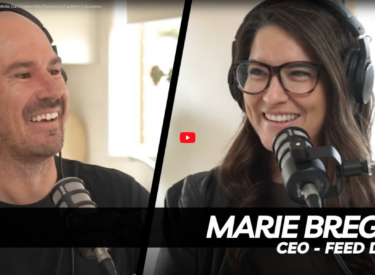It feels like a new and exciting social media platform pops up every other week! It can be a daunting task to keep up with the changes and know what you should be posting to each platform.
But that’s where we come in!
We’ve put together a list of our favourite social media platforms and outlined the content you should share on each to make the most of them!
Choosing the best social media platform for your business:
When evaluating which social media platforms your business will appear on, you need to consider your target audience and the type of media you plan on putting out for your brand.
Different platforms prefer different media. For example, Instagram is visual with images and videos, TikTok is exclusively video content, while LinkedIn is primarily long-form text posts.
It’s also important to know where your audience is viewing their content. If your audience is skewed towards millennials, you’ll most likely find them on Instagram and TikTok. Or, if you’re targeting business professionals, you’ll reach them on LinkedIn and Facebook more than any other platform.
So, with that in mind, let’s take a look at the different platforms available to you!
The platform that kicked off social media as we know it today, Facebook has stood the test of time. It’s often the first platform that comes to mind when you think of social media. Regardless of what your brand is, your customers expect to find you here.
A Facebook business page is a must-have for all brands. Customers appreciate the direct contact that Facebook messenger provides so they can have their queries and questions answered in a fast and conversational way (instead of a formal email or a website contact form). Facebook gives users the ability to discuss your brand with other customers and is ideal for creating positive word-of-mouth and generating good reviews.
Facebook is also the king of social media advertising, with its ability to create effective ads across Facebook and Instagram in its ads tool. It was one of the first social media platforms to commercialise its platform and remains the go-to for advertisers today.
Best used for – collecting reviews, advertising and customer service.
Best content to post – images, videos, events, text posts and website links can all be shared to Facebook.
Instagram is centred around visual media with the ability to share photos and videos. It’s one of the most aesthetic platforms and provides the opportunity to create a beautiful experience for potential customers. Instagram is all about drawing attention to your product or service through visual storytelling.
The ability to use hashtags on Instagram allows you to reach new people that are interested in what you offer. Having a go-to hashtag library for all your content types means you can maximise your reach and showcase your brand to people who otherwise may have never come across you.
Best used for – sharing visually appealing content, collecting User Generated Content, reaching new audiences.
Best content to post – images and videos. Instagram’s Reels option also lets you create and share creative, on-trend content.
Twitter is a fast-paced, instant platform that people go to for the most current news and updates. It offers two-way communication whereby clients and customers can interact directly with the business.
Twitter is ideal for sharing links to new pages and blog posts on your website. Plus, if you make it part of your strategy to share useful and informative content from other sources, you can build your reputation as an authority in your industry.
Best used for – building industry authority, providing real-life updates, communicating with customers.
Best content to post – short and sharp updates (the character limit is quite restrictive though), website links to direct traffic to your site.
LinkedIn is a social network for professionals, meaning it can be a useful tool for reaching B2B prospects. However, that doesn’t mean it isn’t useful for B2C companies as well.
If your business is looking to hire new employees, maintaining an active LinkedIn account can help potential applicants learn about your job openings. And if you share updates about your company and employees, you can show them what it’s like to work at your business.
Best used for – building professional connections and recruitment.
Best content to post – long-form text post and images
TikTok
The new kid on the block, TikTok is taking the world by storm. It’s all about easy to consume video content and is the source of upcoming trends and memes.
The key to finding a new audience on TikTok is to share engaging, exciting content that makes users want to learn more about your business. Brands can go viral from just one video, but it does require more attention than other platforms to stay on top of trends and current content.
TikTok does have advertising options but it’s less commercialised than other platforms and users tend to turn to it for more entertainment than product research.
Best used for – sharing behind the scenes content, participating in viral trends.
Best content to post – short videos between 15 seconds and 2 minutes long.
Pinterest is a visual social media platform where users can discover new products, recipes, trends, design ideas, etc. Pinterest allows users to ‘Pin’ their favourite images to create ‘Boards’ that they can continue to add to. It’s basically a virtual pinboard!
Pinterest is great for ecommerce brands with 87% of ‘pinners’ having purchased a product they’ve found on Pinterest. The platform allows you to upload individual photos with short descriptions and a link to a webpage. It also has a built-in shopping feature that makes it easy for businesses to promote their products on the platform.
Best used for – sharing new products, sharing visually appealing content.
Best content to post – product and lifestyle images with website links.
Snapchat
Snapchat allows users to share photos or videos with their audience that remain published for 24 hours before disappearing. Snapchat’s users are the youngest of the social media platforms making it ideal if your audience’s demographic is 18-24 year olds.
Snapchat offers advertising options whereby ads can be geotagged to promote events, offers and deals within certain locations during a certain time period. It’s ideal for businesses looking to promote a timely event, such as a product launch or conference.
Best used for – sharing real-time and unedited updates, promoting events.
Best content to post – behind the scenes videos, pieces talking to the camera with updates or upcoming promotions.
Youtube
Youtube is one of the largest sources of user-generated content online! With millions of product review videos, recommendations, and tutorials available it’s the place to be if your brand wants to educate customers either pre- or post-purchase.
If you offer a product that requires a little know-how to use, for example, an at-home manicure system, then providing tutorials and demonstration videos via youtube is a great way to educate your customers. YouTube is also ideal for hosting videos to embed on your website too.
Best used for – tutorials and demonstrations.
Best content to post – long-form videos.
Armed with your new knowledge of social media platforms, which new platforms will your brand be jumping on board for your brand?!
Still need a helping hand with Social Media Marketing? Get in touch with us today to learn how we can help you!



